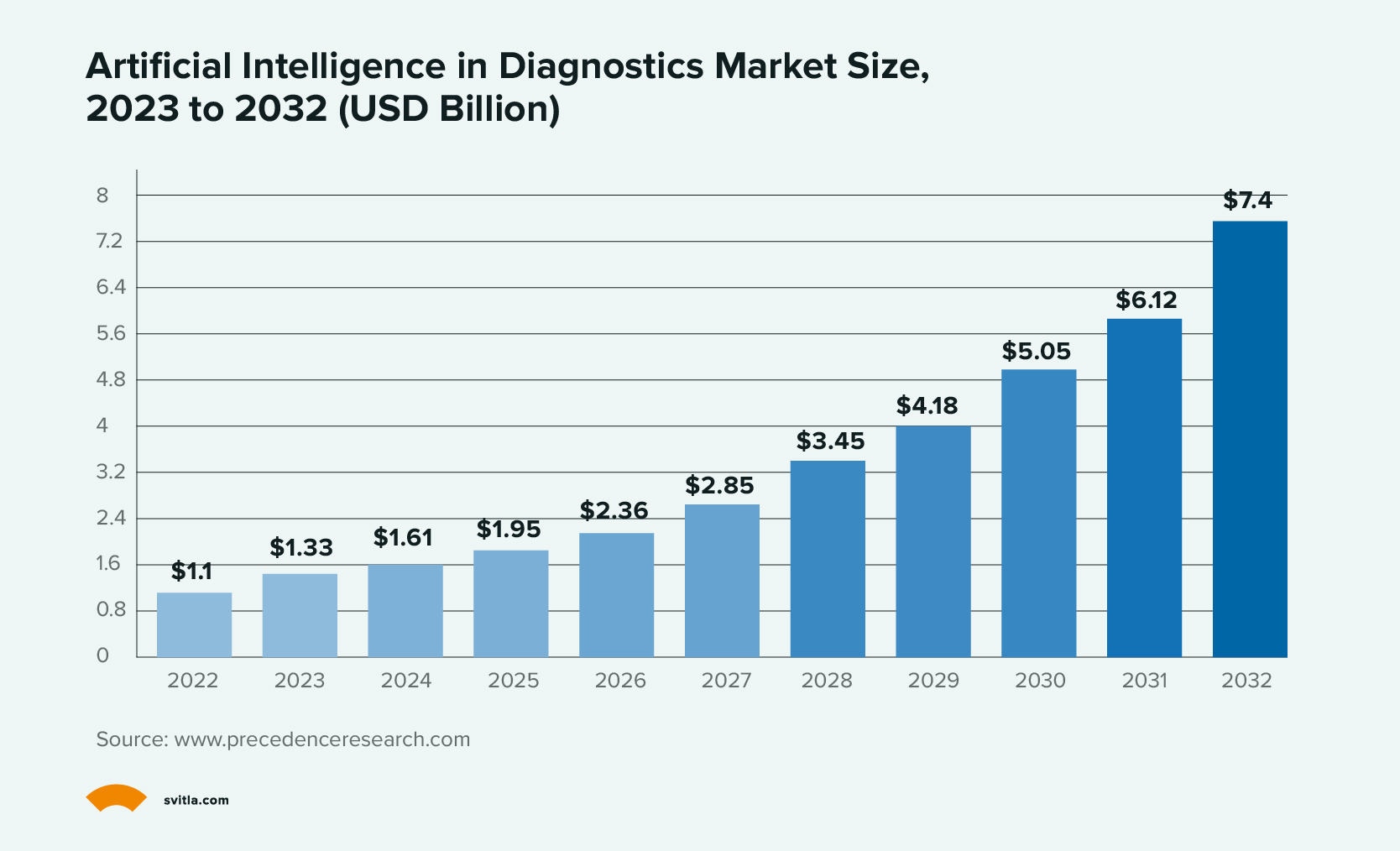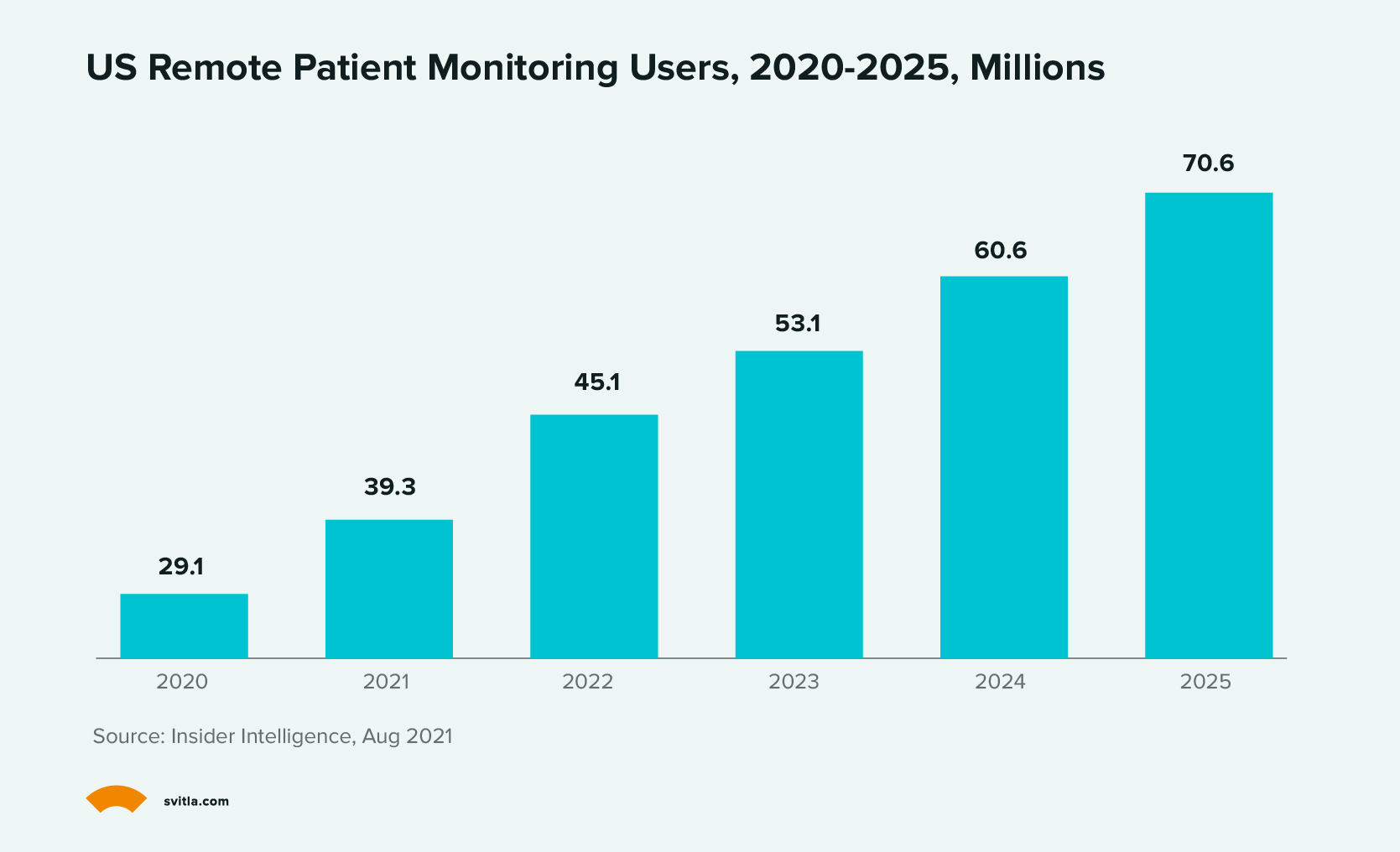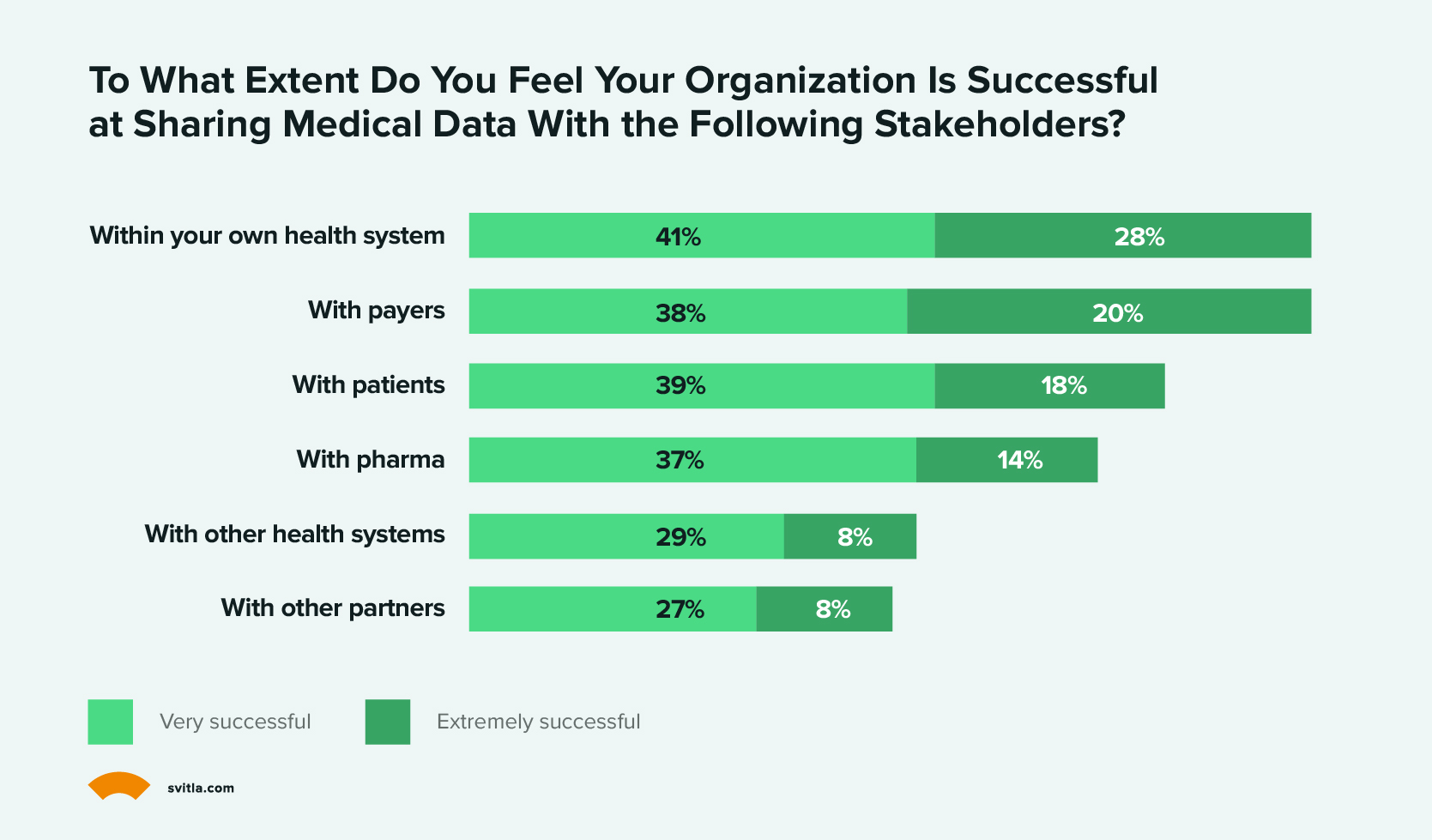The healthcare industry had already adopted more patient care technology before the pandemic hit. The use of digital systems and tools was steadily increasing each year. COVID-19 massively accelerated the adoption of technologies in healthcare for both doctors and patients. Solutions like telemedicine, patient portals, and remote monitoring became essential overnight.
The pandemic forced many new technologies onto healthcare providers, whether they felt ready. Today, according to an EY report, 83% of doctors reported feeling more comfortable using digital health technologies than before COVID-19 emerged. Additionally, 67% of doctors plan to continue using innovative technologies to enable better patient care and more efficient practice operations.
This raises an important question. How can technology improve healthcare? With many options now available, which are the most critical technologies healthcare providers want today and into the future? In this article, we’ll answer these and other questions.
What is Patient Care Technology?
Patient care technology includes solutions such as medical devices, information systems, algorithms, artificial intelligence, cloud computing, and blockchain designed to support and enhance organizations' delivery of healthcare services.
According to Deloitte, 92% of survey respondents view better patient experiences as the top desired outcome from digital transformation. Medical technology helps by connecting patients to their data and healthcare providers. It aids the shift from treating diseases to managing health. Healthcare leaders adopt new medical technologies to cut costs, prevent errors, and improve patient care and efficiency.
Technologies to Implement for a Better Patient's Experience
Giving good healthcare is more than diagnosing and treating illness. How patients feel during and after visits matters, too. Doctors who care about patient satisfaction often find patients do better – they follow treatment plans more and stay loyal to the practice.
Improving patient care through technology can be done in several ways. Here are a few:
Electronic Health Records (EHRs)
Medical mistakes are the third leading cause of death in the US – behind only heart disease and cancer. A major 2013 study found that preventable errors may contribute to as many as 400,000 deaths per year. That is more than deaths from car crashes, AIDS, Alzheimer's, and diabetes put together.
So, how does electronic health records improve patient care? E-prescribing has helped reduce medication errors for around 63% of patients, improving patient safety. The use of EHRs also enhances patient safety in healthcare settings. EHRs give doctors and nurses quick access to patients' complete medical information, including their history, current medications, allergies, and test results. Having this accurate and up-to-date information readily available allows healthcare professionals to make better-informed decisions quickly, minimizing the chances of errors and providing safer care.
The EHR is about quality, safety, and efficiency. It is a great tool for physicians, but cannot ensure these virtues in isolation. Achieving the true benefits of EHR systems requires the transformation of practices, based on quality improvement methodologies, system and team-based care, and evidence-based medicine. – American Academy of Family Physicians
Telemedicine
Telemedicine is a digital way for patients to get healthcare without going to a doctor's office or hospital. Using technology like video calls or apps, patients can talk to doctors and receive treatment from the comfort of their own homes. This is helpful for people who have difficulty traveling or live in remote areas with few healthcare options nearby.
According to the Single Care telehealth research, up to 78% of patients felt satisfied after using telehealth services. Additionally, 68% of doctors said they want to use telehealth more.
“Telemedicine significantly decreased odds of ICU mortality.” – Critical Care Medicine
Wearable Technology
Wearable healthcare gadgets are devices people wear to track health data. These smart accessories have sensors that monitor blood sugar, sleep, activity levels, and heart rate. The information collected by these wearable tech tools provides helpful insights into a person's overall health and wellness. Wearing them makes it easier to understand your body and choose a healthier lifestyle.
So, how does technology improve patient care? Software Advice surveyed nearly 500 U.S. patients using prescribed wearable devices in 2022. 86% said the devices improved their health and gave doctors better care. Patients found consumer wearables like Apple Watch and Fitbit easier to use than medical devices. 15% said their wearable lets them get remote care, which is very helpful for people in rural areas with limited healthcare access nearby. As wearables keep advancing, technology improves healthcare remote monitoring and care for those with fewer local healthcare options.
.jpg)
Artificial Intelligence (AI) in Diagnostics
Artificial Intelligence, or AI, is part of computer science focused on creating intelligent systems that can do tasks normally requiring human thinking abilities. This allows machines to learn from data, gain insights from experiences, and continuously improve their performance through adaptive learning. AI has become an invaluable tool in healthcare that relies on algorithms and data to make autonomous decisions and provide highly accurate results.

Through machine learning algorithms, AI can spot patterns and “learn” to diagnose based on those patterns. AI can be programmed to flag abnormalities and signs of diseases in medical images like MRIs, X-rays, and CT scans. This AI software uses neural networks that analyze medical images and genetic data. This information feeds into AI's decision-making process, enabling high accuracy and insights into a patient's condition.
It's fair to say that AI excels at correctly diagnosing patients. Doctors undergo years of training to diagnose illnesses accurately. Yet, misdiagnosis is widespread, with around 1 in 20 adult patients being misdiagnosed annually in the U.S.
So, how does technology improve healthcare? Like doctors' intense practice, algorithms require thousands of examples to learn how to recognize diseases. In fact, with a standard accuracy of 72.52%, AI outperforms the average doctor's diagnostic accuracy of 71.4% in the same study.
For AI to diagnose patients with such high accuracy, the examples must be based on factual data. Hence, AI shines in processes involving digitized diagnostic information, with little room for ambiguity or misinterpretation.
AI technologies that can interpret non-digital information, like handwritten doctor's notes, are still developing. However, these technologies may take time to recognize more complex, non-digital data reliably.
Remote Patient Monitoring (RPM)
Remote patient monitoring (RPM) is gaining traction as a promising healthcare technology, with growing proof of its ability to enhance patient outcomes. RPM empowers healthcare providers to monitor patients outside traditional clinical settings, enabling timely interventions and elevated care quality. According to Insider Intelligence, a staggering 70.6 million Americans, or 26.2% of the population, will use RPM tools by 2025. Moreover, healthcare providers leveraging RPM-enabled home monitoring systems are significantly curbing hospital readmissions. Here's how RPM technology is boosting treatment efficacy and patient satisfaction.
RPM technology enhances provider vigilance, helping patients adhere to the technology and follow their prescribed care plans. For healthcare professionals, this translates into fewer complications, improved patient outcomes, and a more efficient care delivery system. Furthermore, patients are delighted with the positive results. A survey conducted by the University of Pittsburgh Medical Center revealed an impressive patient satisfaction rate exceeding 90% after providing patients with remote patient monitoring equipment and tablets.
Patient Portals
Patient portals are among other technology trends that have an impact on patient care. Online platforms help healthcare organizations to maintain close contact with their patients. Many institutions have already embraced patient portals to better manage all aspects of patient care.
While these portals vary across institutions, most offer features for managing prescriptions, viewing test results, making payments, and providing in-depth treatment information.
Patient portals also simplify appointment scheduling for patients, as they only need a device connected to the internet. Moreover, these portals can include chatbots to fully automate the appointment process, making it even easier for patients.
Additionally, implementing AI into patient portals can lead to innovative features, such as intelligent reminders for routine services or follow-up appointments, further enhancing the patient experience.
Possible Challenges in Patient Care Technologies Implementation
Emerging healthcare technologies can decrease costs, increase physicians’ productivity, and boost patients’ overall experience. However, implementation can be long and challenging. So, healthcare organizations typically face significant issues. These include time, money, interoperability, and security. Let’s oversee the main ones one by one.
Interoperability
Interoperability stands for the software's ability to be compatible with third-party systems. EHRs need to share patient records between healthcare organizations. If EHRs can't share files, they are useless. For example, data sharing fails if one EHR can't read another EHR's file types.
Sharing data between EHRs is still challenging. A Business Insider report asked hospital leaders about sharing data. Only 37% said they share data with other health systems very or exceptionally well. Most hospitals struggle to make their EHRs talk to other EHRs. Data gets stuck in one system and can't move. This makes interoperability a massive problem for EHRs.

Patient Data Privacy Issues
Patients and healthcare professionals expect robust safeguards and record completeness. However, medical data is a prime target for cyberattacks, so you must integrate advanced data security into your solution to prevent breaches by malicious actors and secure sensitive patient information.
Ensure your software solution complies with HIPAA regulations around the confidentiality and integrity of electronic protected health information (ePHI). Adhering to privacy rules can slow EHR adoption, but upholding patient trust and mitigating risk is necessary. When evaluating and optimizing EHR platforms, healthcare organizations must weigh data protection needs with usability and cost considerations. A multi-layered defense strategy combined with HIPAA-compliant processes can enable data fluidity and uphold security assurances.
Outdated Technologies
An outdated IT infrastructure can severely hinder your ability to tackle healthcare interoperability, big data, and data security challenges. According to HIT Infrastructure, healthcare systems are already straining under the increasing load of bandwidth-intensive connected devices. And that's just one hurdle. Introducing software necessary for effective big data processing may push your aging system to its limits.
And that's just one hurdle. Introducing software necessary for effective big data processing may push your aging system to its limits. However, updating the system can also present its own set of challenges. Your legacy systems may not seamlessly integrate with newer software solutions, and replacing them can be prohibitively expensive.
You require a reliable software development provider like Svitla Systems to handle this issue. We consult you to identify the best solutions, design effective strategies, develop them rapidly, and even assist with maintaining the new systems. For instance, we’ve helped Avalon.AI, the US data analytics company, to modify and enhance opioid prescription practices. We’ve offered an appropriate technical stack, created an MVP in three months, and remain its dedicated digital solutions partner.
Conclusion
The COVID-19 pandemic accelerated tech adoption, guiding the sector toward a more resilient, patient-centered, and technologically advanced future. Prioritizing innovation and patient well-being ensures that technology continues to enhance healthcare quality and experiences.
Emerging patient care technologies have revolutionized healthcare. Technology has become a cornerstone for better outcomes, from EHRs that ensure accuracy to telemedicine which provides convenient access.
However, interoperability, data privacy, and outdated systems issues hinder progress. Healthcare organizations must address these hurdles strategically. By collaborating with reliable software development providers, they can navigate these challenges while leveraging technology's benefits.
Contact Svitla Systems to overcome your healthcare technology challenges and harness the power of innovation for superior patient care.





![[Blog cover] SEO optimization best practices](https://svitla.com/wp-content/uploads/2025/05/Blog-cover-SEO-optimization-best-practices-560x310.jpg)